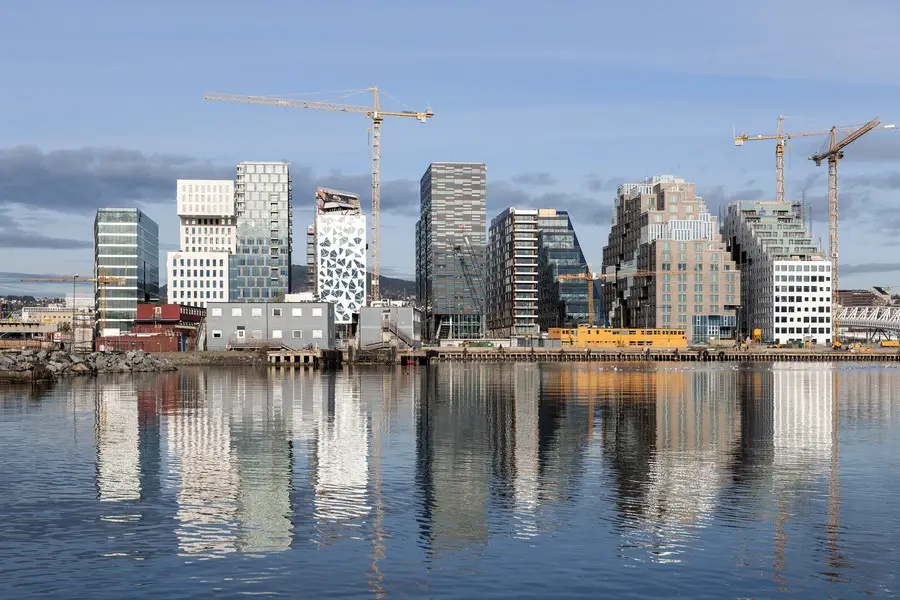I just found the time to read through that (far too) long article. Ms. Slade sounds ... like she doesn't get out of Boston much. I certainly don't disagree that too much of contemporary Boston architecture is crap (and certainly I think almost all of it is on the Seaport ... though I'm happy as hell we at least don't have massive vacant lots there any more).
But she's wrong in suggesting this is a *Boston* problem. It's not; it's a global problem - and it's a problem of Modernism.
Slade tells us that cities like New York or Chicago or Philly (!) build better buildings than Boston. I live in New York. I think Boston has become the "nicer" city of the two at this point (in terms of being all-around more gentrified and "nice"). And I know Boston has the overall better architecture (these things are linked). Yes, NYC has its super-star buildings around the High Line. But those pale in quantity to the non-High Line-caliber buildings that get built here. NYC's most prolific architect is a certain war criminal known as Gene Kaufman. Believe me, there is NOTHING - I repeat, NOTHING - in Boston that can hold a candle to the level of hideousness with which Gene Kaufman and dozens like him pollute formerly beautiful neighborhoods.
Slade utterly fails to say what *would* be better. We hear a lot about how terrible Boston is (with few concrete examples other than the Seaport and 30 Dalton). But there is no clear description of what is "good" for her. Instead, we get a few random-seeming, and highly debateable, examples: New York (per above), Chicago's Soldier Field (
derided by many as a failure), and, in the photo page at the end, some truly bizarre/hideous buildings designed by Boston firms for East Asian clients as well as 2 small-lot funky buildings best described as "twee" and certainly not on applicable for any large urban commercial structure.
The fact is, there really isn't any place on earth that does contemporary architecture *that* much better. Contemporary architecture in Copenhagen or Berlin is better on the whole ... but a lot of what goes up there does look like that Oslo development - i.e., better materials than what we get most likely, but not better architecture. Which is to say: Contemporary architecture on the whole is pretty poor.
There are really two factors behind the ugliness of contemporary architecture, and neither is specific to Boston: Modernism and economics.
Modernism - which today's architects "cling to" (per our president) more fanatically than anyone in Saudi Arabia does to Islam, or, on a more peaceful note, than anyone in Alabama does to Southern Baptism - is not attractive to humans. Its devoid of charm; it's the most basic, dull shapes. Sure, a new piece of Modernism (take Renzo Piano's Whitney) can be thrilling, but only because it's new and shiny. When its sheen wears off, a Modernist building is, well, ugly.
Regarding economics, there are some facts we won't get away from. Like the fact that real estate development has become highly professional; and most buildings today are put up by highly professional developers rather than companies (if a company owns its building - like Novartis in Cambridge (?) to Slade's example - its more incented to drop the margin on the building's construction and invest more in a building that buffs its image) or less professional developers as was the case in the past.
The one thing that Boston royally screwed up, IMO, is the lot sizes in the Seaport. We can't get around Modernism until architects give up their fanatacism toward it - in addition to being worshiped by architects, Modernism is handily also the cheapest form of architecture to build, so developers on their own won't move toward more-attractive buildings any time soon. And we can't get around margin-oriented developers looking to skimp on design and materials.
But the Seaport - Boston's largest experiment in contemporary architecture - could easily have been rezoned toward smaller lots, or rebuilt around narrower streets. That result, maybe, would have led toward something closer to the best examples of contemporary architecture that can be found in places like Copenhagen or Berlin: glassy and Modernist, yes, but nicely filling lots, with ground retail and human-scale neighborhoods. That - the city planning element - is where Boston went wrong in the Seaport specifically.
But even then, we'd still have wound up with shiny-but-ephemeral Modernism, and the rest of the city's new construction would be moving as it is. Which is to say no worse - and a good deal better, IMO - than other US cities, and worse (due to lot size and materials quality) than the best of the breed in Northern Europe ... but not by that much.




